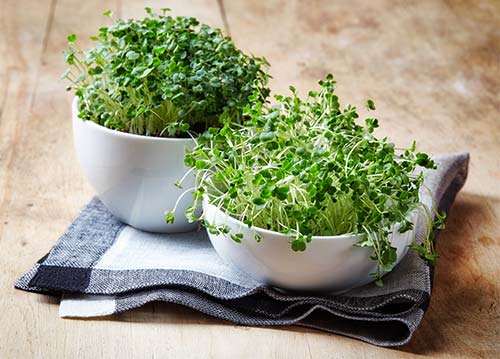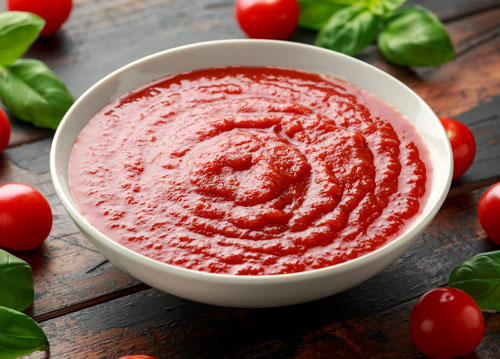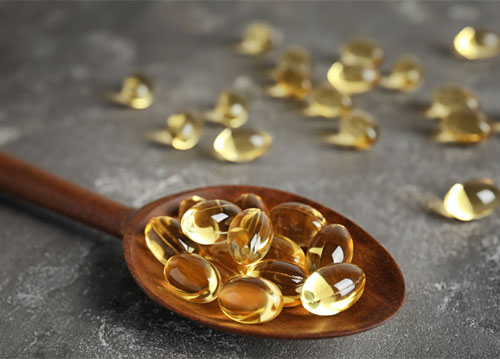Nine simple changes to live your best life now

Author Aiden Goggins, BPharm, MSc NutrMed Last updated 15th January 2020
- Ingredients & Nutrition
We can now expect to live longer than ever before. Now standing at around 80, life expectancy has doubled over the span of the last century. Sadly though, we haven’t reaped the benefits of these best years. In the past decade alone the time we spend in ill health has doubled, meaning that too often our later years are spent fighting chronic disease.
But there is a way to avoid this. Science consistently shows us that the health problems we acquire later in life are heavily dictated by the food we eat during the years between being healthy and early development of disease. Our diets are ultimately responsible for whether we succumb to diseases of aging or stay young.
Still, with so much confusing information out there, what exactly are the top dietary changes you can implement today to live your best life?
- Be smart with berries

The old adage may call for ‘an apple a day’ but there is no fruit more certain to keep the doctor away than berries.
Their bounty of anthocyanins, which give them their vivid colour, elicit potent health benefits. A 2018 review found adding berries to our diets supports healthy aging by benefitting inflammation, heart health and insulin control1 and a second review in 2019 found berry consumption boosted gut health and brain power.2 Those who ate the most berries staved off cognitive decline, while blueberry supplementation improved cognitive functioning in both adults and children.
Commonly available berries, such as blueberries, raspberries and strawberries have shown promising results in reducing pain and inflammation in studies of arthritis.3 Montmorency, or tart, cherries significantly reduced uric acid, making them an essential dietary inclusion for alleviating the excruciating pain of gout.4
TIP: The health boon from berries appears to result from their high anthocyanin content. Blueberries, with their vivid blue colour, come out top of the anthocyanin table, with wild blueberries (also known as European blueberries or bilberries) boasting twice the number of anthocyanins compared with regular blueberries.
- Cook with turmeric

Turmeric, known as ‘Indian Solid Gold’, has been used in Ayurvedic medicine for over 4,000 years for its anti-inflammatory properties. This is largely due to the fact it contains the nutrient curcumin. Curcumin’s potent anti-inflammatory properties have been investigated for osteoarthritis of the knee and clinically shown to be as effective as commonly taken painkillers.5
The benefits of curcumin don’t end there. Its consumption improves cholesterol levels and blood sugar control. 67 In patients with early type 2 diabetes, eating just a gram of turmeric a day improved their working memory.8
TIP: The effectiveness of turmeric is limited because it is poorly absorbed by the body. However, research shows that by consuming it with fat we can dramatically increase its absorption. This fits perfectly with the Indian tradition of adding turmeric to warm milk, curries, and other hot dishes.
- Sprout your broccoli

In all of us there is a protein called Nrf2. It acts as the ‘guardian’ of the body’s response to stress and inflammation, and ultimately our vitality. When Nrf2 is triggered, it delivers a loud wakeup call to a vast number of genes that produce hundreds of different antioxidants, anti-inflammatories and detox chemicals. Alas, there is a natural decline in Nrf2 from age 40 – as much as 50% – opening the door to the ill-health we find with ageing.
The good news is that the right diet can invigorate Nrf2, with the nutrient sulforaphane, obtained from broccoli, the most potent Nrf2 activator known to man. Studies show benefits from ridding the body of toxins to halting inflammation to improving brain function. In a 2017 breakthrough study, diabetics on metformin therapy were given sulforaphane as a broccoli sprout extract. After just 12 weeks their blood sugar measures decreased by a massive 10% above what the drug alone could do, showing the truly significant health benefits the food we eat can bring.9
TIP: Seek broccoli in sprout form as it yields up to 50 times the amount of sulforaphane compared to mature broccoli heads. If you are using mature broccoli florets, grinding mustard seed on them before consumption has been shown to increase sulfroaphane levels four-fold.
- A cup of Joe

Gone are the days when our enjoyment of coffee was cooled by a twinge of guilt. The research is unequivocal: coffee is bona fide health food. It is a veritable nutrient treasure trove, being the number one source of healthful polyphenols in our modern diets – even greater than fruit and vegetables. And now the most recent research points to it slowing down aging.
At the end of all our DNA is a type of insulation called telomeres – the longer they are, the more they protect your DNA from ‘fraying’. Thus, unsurprisingly, shorter telomeres are associated with shorter lives and ill health. A recent study examining US adult dietary habits has found that while caffeine consumption shortens our telomeres, fascinatingly, coffee intake increases them.10 It means not only is coffee not bad for you due to its caffeine content, but its consumption should be encouraged, and it confirms a previous study published in the New England Journal of Medicine that coffee drinkers live longer than those who abstain.11
This is why coffee drinkers have significantly less diabetes, as well as lower rates of certain cancers and neurodegenerative diseases.
TIP: Choose Italian style unfiltered coffee such as espresso-based coffees. Filtering removes the diterpenes cafestol and kahweol which give coffee its established health food status.
5. Tomato blitz

Carotenoids are a coloured group of antioxidant nutrients found across fruits and vegetables with the headline-hitter being lycopene. Lycopene is best associated with tomatoes, giving them their deep-red complexion, and their consumption provides about 80% of our dietary lycopene intake.
The consumption of tomatoes and tomato products is strongly associated with reductions in heart disease, with a 2017 meta analysis finding higher intakes of tomatoes and lycopene had positive effects on blood lipids, blood pressure and endothelial function.13
Overall, low circulating blood lycopene is a predictor of early death14 and, because aging increases stress upon our cells, studies show our need to intake lycopene is much higher than it was when we were younger.15
Right now in the UK we only take in about 30 grams of tomato products a day compared with up to 175g in Italy.
TIP: Lycopene is better absorbed from cooked or mechanically processed tomatoes (chopping). Processing releases lycopene from the cell wall and the presence of fat increases absorption. So enjoy your tomatoes best in sauce form as found in the Mediterranean diet and target to have such dishes three times a week.
Can a plant food diet provide it all?
Given the recent trend towards vilifying animal foods, it’s fair to ask whether they have any role to play in guarding health as we age.
- Protein power

There is mounting evidence that older adults have a blunted anabolic response to dietary protein compared to younger people and thus need higher dietary intakes to maintain strength and physical function.16 As well as animal foods having a high content of total protein they are especially rich in leucine, which is the most anabolic of the amino acids but is only found in low amounts in plant protein.
Dietary protein is also key for bone health, making up roughly 50% of the volume of the bone. A higher dietary protein intake has substantial benefits for maintaining bone mass as we get older.17
7. The vitamin effect

Animal products also offer a source of essential micronutrients not easily obtained from plant foods alone. For example, we can only get vitamin B12 from animal products (including dairy and eggs). Shockingly, it is estimated that up to 40% of older adults have vitamin B12 deficiencies.18 The reason for this is that as we get older our ability to absorb vitamin B12 decreases as a result of lower stomach acid levels, meaning it’s more important than ever to ensure an adequate animal food intake with age - alternatively, older people should take a B12 supplement. If we become deficient in vitamin B12 we put ourselves at increased risk of heart disease, anaemia, neurological degeneration, depression and dementia. 19
- The power of three

Oily fish is an exceptionally nutritious protein choice to include in your diet. Sadly, three quarters of the population shun it, resulting in low intakes of the two vital omega-3 fats, EPA and DHA, which are crucial for reducing inflammation with aging. So potent are the fatty acid omega-3s that their established benefits range from mood to cardiovascular to joint health.
EPA and DHA are recommended by the American Heart Association for people with coronary heart disease, with just under 1g per day reducing heart attacks, strokes and death by 15%.20 Higher doses - 3 grams of EPA and DHA - are a safe and effective means to reduce pain and NSAID use in patients with rheumatoid arthritis.21
TIP: The best omega-3 sources are herring, sardines, salmon, trout and mackerel in that order. Target 2-3 servings a week to provide on average 500mg of EPA/DHA a day. Steer clear of high mercury fish such as tuna, swordfish, halibut and snapper. Higher levels for heart disease and rheumatoid arthritis can be achieved through supplementation, with algae sourced omega-3 supplements available for vegans.
9.Eat to your body clock

In 2017 a Nobel Prize was awarded to scientists who unravelled how our bodies tell time: the body clock. This in-built clock – called our circadian rhythm – governs our sleep and wakefulness cycles and prepares the cells for different physiological processes throughout the day. Circadian research has opened a whole new frontier in how we understand the impact of food on our bodies, and it’s becoming increasingly apparent that good health is not just about what we eat but when we eat.
Our body clocks sets a daily rhythm for our metabolism to follow in order to be ready for a day’s activity. It does this by enhancing the sensitivity of insulin on our muscles. By eating to this pattern we reap these metabolic benefits. But if we eat late in the day, rather than early, we miss the window for increased fuel efficiency. Instead we are eating when our daily rhythm is set for resting and so experience higher blood sugar and fats.
This mismatch between our body clock and lifestyles disrupts our cellular health, causing cellular stress and metabolic upset affecting gut health and increasing diseases such as diabetes and cardiovascular disease. 22
TIP: Synchronise your body clock by eating early in the day and cease eating from evening onwards when the body is winding down. Our body clocks are most sensitive to carbohydrate intake so if you must eat late ideally choose low carbohydrate meals. Other ways to improve body clock alignment are through avoiding blue light at night time (screen use), exercising and a consistent sleep pattern.
Summary
The studies are clear: many of the health issues that are usually associated with ageing are connected to diet.
We are now expected to have longer lifespans than our parents and grandparents, so maintaining quality of life is more important than ever. By adding the right nutrients to our diets we can hope to feel younger for longer.
References
- Cassidy, A. (2018). Berry anthocyanin intake and cardiovascular health. Molecular aspects of medicine, 61, 76-82.
- Kalt, W., Cassidy, A., Howard, L. R., Krikorian, R., Stull, A. J., Tremblay, F., & Zamora-Ros, R. (2019). Recent research on the health benefits of blueberries and their anthocyanins. Advances in Nutrition.
- Basu, Arpita, Jace Schell, and R. Hal Scofield. "Dietary fruits and arthritis." Food & function 9.1 (2018): 70-77.
- Zhang, Yuqing, et al. "Cherry consumption and decreased risk of recurrent gout attacks." Arthritis & Rheumatism 64.12 (2012): 4004-4011.
- Shep, Dhaneshwar, et al. "Safety and efficacy of curcumin versus diclofenac in knee osteoarthritis: a randomized open-label parallel-arm study." Trials 20.1 (2019): 214. Hutchins-Wolfbrandt, A., & Mistry, A. M. (2011). Dietary turmeric potentially reduces the risk of cancer. Asian Pac J Cancer Prev, 12(12), 3169-3173.
- Panahi, Y., Hosseini, M. S., Khalili, N., Naimi, E., Majeed, M., & Sahebkar, A. (2015). Antioxidant and anti-inflammatory effects of curcuminoid-piperine combination in subjects with metabolic syndrome: a randomized controlled trial and an updated meta-analysis. Clinical nutrition, 34(6), 1101-1108.
- Lee, M. S., Wahlqvist, M. L., Chou, Y. C., Fang, W. H., Lee, J. T., Kuan, J. C., ... & Andrews, Z. B. (2014). Turmeric improves post-prandial working memory in pre-diabetes independent of insulin. Asia Pacific journal of clinical nutrition, 23(4), 581.
- Axelsson, Annika S., et al. "Sulforaphane reduces hepatic glucose production and improves glucose control in patients with type 2 diabetes." Science translational medicine9.394 (2017): eaah4477.
- Tucker, L. A. (2017). Caffeine consumption and telomere length in men and women of the National Health and Nutrition Examination Survey (NHANES). Nutrition & metabolism, 14(1), 10.
- Freedman, N. D., Park, Y., Abnet, C. C., Hollenbeck, A. R., & Sinha, R. (2012). Association of coffee drinking with total and cause-specific mortality. New England Journal of Medicine, 366(20), 1891-1904.
- Etminan, Mahyar, Bahi Takkouche, and Francisco Caamaño-Isorna. "The role of tomato products and lycopene in the prevention of prostate cancer: a meta-analysis of observational studies." Cancer Epidemiology and Prevention Biomarkers 13.3 (2004): 340-345.
- Cheng, H. M., Koutsidis, G., Lodge, J. K., Ashor, A., Siervo, M., & Lara, J. (2017). Tomato and lycopene supplementation and cardiovascular risk factors: A systematic review and meta-analysis. Atherosclerosis, 257, 100-108.
- Shardell, M. D., Alley, D. E., Hicks, G. E., El-Kamary, S. S., Miller, R. R., Semba, R. D., & Ferrucci, L. (2011). Low-serum carotenoid concentrations and carotenoid interactions predict mortality in US adults: the Third National Health and Nutrition Examination Survey. Nutrition research, 31(3), 178-189.
- Semba, R. D., Patel, K. V., Ferrucci, L., Sun, K., Roy, C. N., Guralnik, J. M., & Fried, L. P. (2010). Serum antioxidants and inflammation predict red cell distribution width in older women: the Women's Health and Aging Study I. Clinical nutrition, 29(5), 600-604.
- Strasser, B., Volaklis, K., Fuchs, D., & Burtscher, M. (2018). Role of dietary protein and muscular fitness on longevity and aging. Aging and disease, 9(1), 119.
- Wallace, Taylor C. "Optimizing Dietary Protein for Lifelong Bone Health: A Paradox Unraveled." Nutrition Today54.3 (2019): 107-115.
- Lachner, C., Steinle, N. I., & Regenold, W. T. (2012). The neuropsychiatry of vitamin B12 deficiency in elderly patients. The Journal of neuropsychiatry and clinical neurosciences, 24(1), 5-15.
- NHS Overview: Vitamin B12 or folate deficiency anaemia
- Yokoyama, M., Origasa, H., Matsuzaki, M., Matsuzawa, Y., Saito, Y., Ishikawa, Y., ... & Kita, T. (2007). Effects of eicosapentaenoic acid on major coronary events in hypercholesterolaemic patients (JELIS): a randomised open-label, blinded endpoint analysis. The Lancet, 369(9567), 1090-1098.
- Akbar, U., Yang, M., Kurian, D., & Mohan, C. (2017). Omega-3 fatty acids in rheumatic diseases: a critical review. JCR: Journal of Clinical Rheumatology, 23(6), 330-339.
- Wilking M, Ndiaye M, Mukhtar H, Ahmad N. Circadian rhythm connections to oxidative stress: implications for human health. Antioxid Redox Signal.2013;19(2):192–208. doi:10.1089/ars.2012.4889
